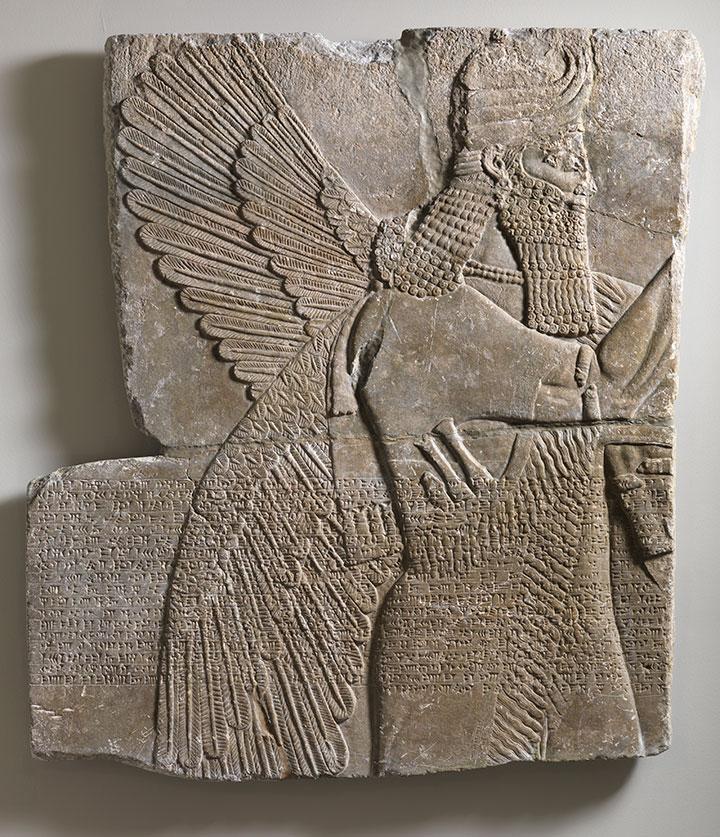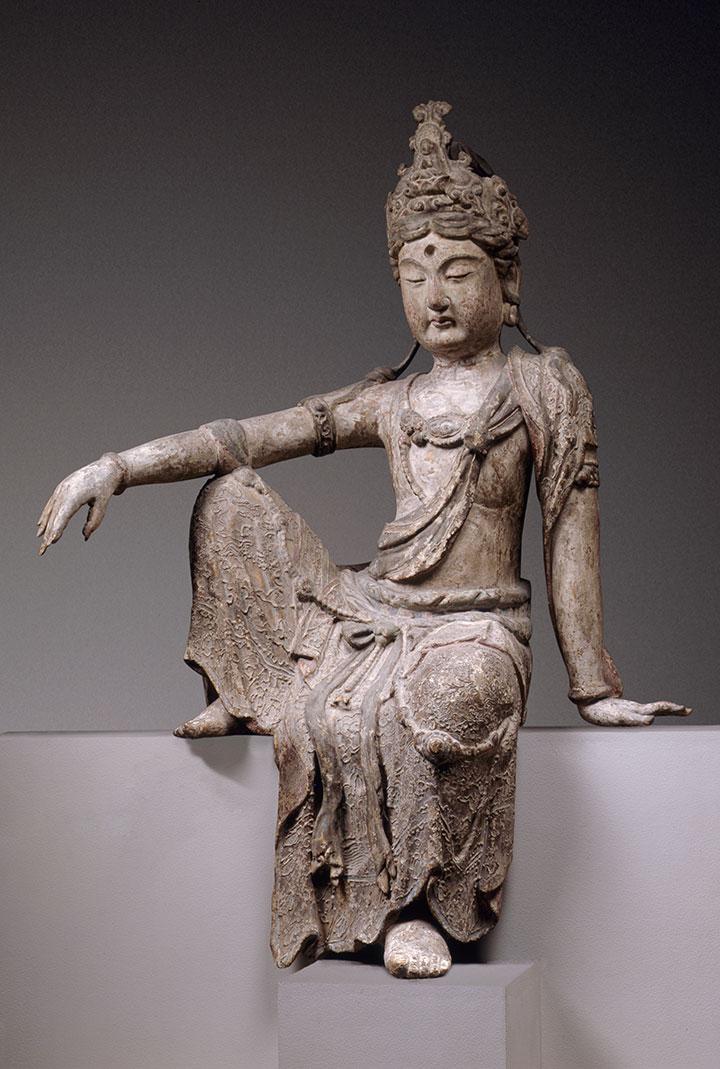James Steward, the Nancy A. Nasher-David J. Haemisegger ’76 Director of the Princeton University Art Museum, shared some of his favorite works from the museum’s collections.
Assyrian
883-859 B.C.
Inscribed Relief of a Winged Genius
Gypseous limestone
Gift of Robert Garrett, Class of 1897
This relief fragment was made for Nimrud, a magnificent new imperial city created by the first “Great King” of the Assyrians in what is now northern Iraq. Carved of a local alabaster, it adorned the throne room of the royal palace, placed behind the throne itself to proclaim the priestly nature of the king.

Chinese (Southern Song dynasty, 1127–1279)
Guanyin Seated in Royal-Ease Pose
about 1250
Wood with traces of blue-green, red, and gold pigments on white clay underlayer with relief designs
Museum purchase, Carl Otto von Kienbusch Jr., Memorial Collection
One of the great treasures of the Museum’s Asian collections, this sculpture depicts the Chinese Buddhist deity Guanyin, the Bodhisattva of Infinite Compassion. With its profound sense of patient humanity, this sculpture can be read as either male or female, indicating the deity’s universal and inclusive nature. Its patina of age—and the survival of pigments across eight centuries—makes it an unmissable highlight of the Museum’s Asian art holdings.

Fra Angelico
Italian, ca. 1395/1400-1455
The Penitent Saint Jerome, 1419-20
Tempera and gold on wood panel
Bequest of Frank Jewett Mather Jr.
This painting on panel comes from the hand of one of the great innovators of the early Italian Renaissance and depicts Saint Jerome standing in the desert, in a pose strikingly innovative for the time. The painting’s provenance, or ownership history, is as fascinating as its maker: it was once owned by the literary couple Robert and Elizabeth Barrett Browning, and was gifted to the Museum by its second director.

Fitz Henry Lane
American, 1804–1865
Ship in Fog, Gloucester Harbor, ca. 1860
Oil on canvas
Museum purchase made possible by the Fowler McCormick, Class of 1921, Fund; the Kathleen C. Sherrerd Program Fund for American Art; and Celia A. Felsher, Class of 1976, and John L. Cecil, Class of 1976
A recent Museum acquisition, this painting is both a late masterpiece by the artist and a triumph of Luminism, a style characterized by an intense preoccupation with light and atmosphere that flourished between 1850 and 1875. Like much of the artist’s very best work, narrative detail is stripped away in favor of a fundamental quietude in which atmospheric and light effects prevail. Its subject really is the complex phenomena of haze, mist, and fog, captured through exquisitely subtle tonal gradations.

Frank Stella
American, born 1936
River of Ponds II, 1969
Acrylic on canvas
Gift of Paul W. H. Hoffmann, Class of 1947, and Camille Oliver-Hoffmann
Frank Stella, Class of 1958, is probably the most acclaimed artist to have trained at Princeton, who found almost immediate success following his graduation. Stella was one of the most important and innovative abstract painters of the 1960s, and remains an exceptionally dynamic artist today.


